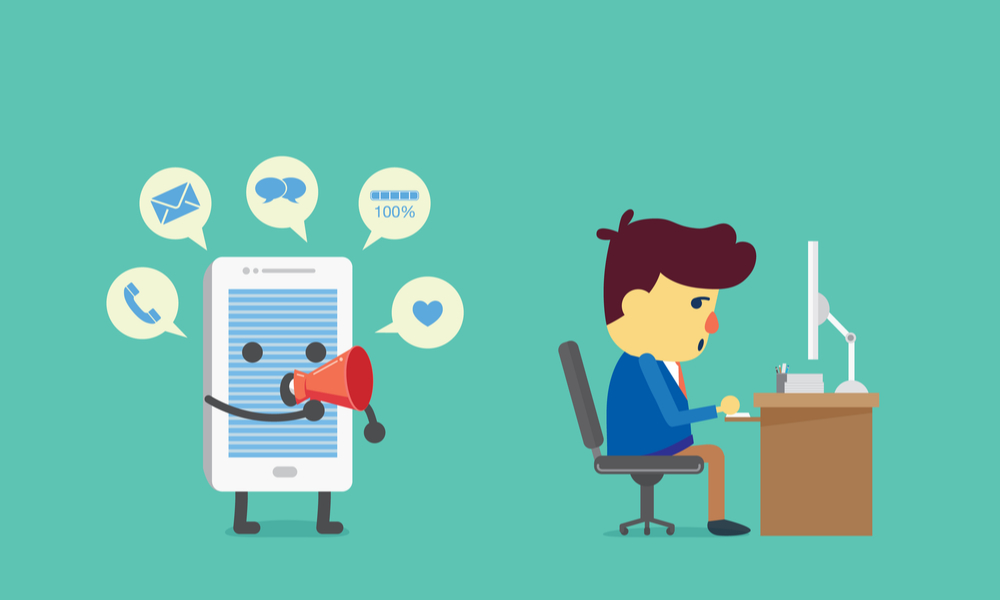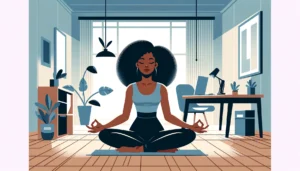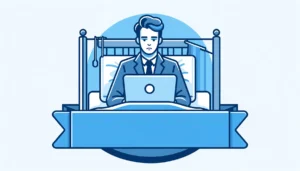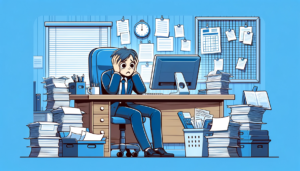COVID-19: How to deal with unexpected distractions
- 6 Min Read
You might think you know how to work from home, but the coronavirus pandemic has totally transformed what it means to work remotely. George L. Vergolias, PsyD, CTM, Medical Director – Forensic Psychologist and Amanda Reszkowski, LCSW, CEAP, ICGC, Director – Executive Optimization, R3 Continuum, give you their expert tips for expecting the unexpected, and surviving in the new normal.
- Author: George L. Vergolias and Amanda Reszkowski
- Date published: May 5, 2020
- Categories

Currently, more than 315 million Americans are under some version of shelter-in-place, which equates to 95% of the country. For many, we are entering the 3rd or 4th week of this new experiment of working from home, and schooling from home. This is a large paradigm shift and not so easy transition for most.
When we’re not traveling for R3 Continuum in our leadership roles – Amanda as Director of Executive Optimization and George as Medical Director – we work from our home offices in Pennsylvania and North Carolina, respectively. We’ve each been working from home for over five years now. It took lots of adjustment at first, but we like it a great deal. We have our productivity routines pretty much locked in, even with young children running about. Yet, we’ve both noticed ourselves struggling these past two weeks to keep focused and as productive as usual, and struggling with why is that so?
In a phone conversation the other day, it finally occurred to us. This is all different. We now have to expect and anticipate the unexpected distractions and build those into our view of the how the day will go. This is different than summer break or track-out or the occasional need to help an elderly parent. While those pose challenges for working from home parents and caregivers, currently navigating the daily grind is more complex.
There are a number of effective productivity patterns that can help, including establishing a routine, prepping for the day as you usually would, and setting a clear schedule. Yet one that is often overlooked is approaching the entire endeavor with the proper perspective and working to keep that perspective front and center.
Even those of us who have worked from home for some time are finding things a bit odd, because now in this current crisis working from home is different than it used to be. It’s important for us to remember that. Kids being out of school, businesses shut down, reduced mobility of family and friends, loss of prior childcare options such as dropping the kids off at grannies house – it’s all different now.
You see it’s not just about “working” from home anymore. Now, for many it also means being caretaker, and teacher, short-order cook, cleaning crew and a various other duties and roles that need to get done because those tasks don’t know or care about a pandemic.
Additionally, there are a myriad of ways everyday decisions get infinitely more complex. Here are a few examples:
On a typical track-out or summer break, Amanda’s daughter may come in and ask if she can go to her friend’s house down the block. “Sure, be back by Noon.” Easy, right? Not anymore. The same question now brings a deluge of follow-up interrogation-like questions: Has that family been exposed? What do the parents do, do they travel, where do they work? What is the parent’s view of this situation? Are they acting responsible? Is this friend mature and responsible enough to keep reasonable social distance? Will my daughter stay outside their house? What if she has to use the bathroom? Will they share food, or a drink? What if other kids come by that house? Does that family have anyone staying with them, from where, when did they arrive? Do they have any elderly people over there who my child might expose? And so on, and so on.
Sorting these questions and conflicts out takes much more time than the previously quick “sure, go ahead.” Now Amanda must think these actions through, may have to call her spouse at work and ask his opinion, may need to call the other kids parents, etc. Then if Amanda says “no,” she has to explain the decision to a young girl who doesn’t quite understand the full situation, is bored to death with cabin fever, and just wants to see her friend and have something to do.
And underneath all of that, at some level, our kids are probably scared. Because shelter them as much as we may want to, kids pick up stuff. They hear the hushed discussions between the parents at the breakfast island or after dinner cleaning up dishes. They pick up snippets from social media, or the news. They notice the markedly reduced traffic and interaction in our neighborhood. They overhear calls with colleagues at the hospital.
This isn’t just about parents caring for kids. A few weeks back, George had a close friend call to say he’s attending an outdoor concert, and then invited him to a block party at the clubhouse of their apartment community. Normal response is, “great, sounds like fun.” Not anymore. This also leads to a host of questions, some stated, some kept to oneself, but all marinated in worry and concern. George’s friend is upset that he won’t join him, thinks George is acting paranoid, says we’re “growing apart.” This leads to discussion, and explaining risk, and George’s needing to reaffirm the friendship and care for the friend.
Or, George’s mother-in-law calls to say they are on the way over to the house, to spend time with the grandkids. Normal response is “great, we’d love to see you.” But now? Wait, what? Bad idea, and yes George has to tell them that, but he can’t just say it and hang up. He has to explain why it’s a bad idea, why they need to turn around now, why if they come over he’s not letting them in. This takes time because feelings are hurt, and they miss their daughter and son-in-law, miss the grandkids, and they have a right to see the family, and so on.
People want normalcy. Normalcy is a sign that “all is ok,” and normal is for us to say “sure, go ahead” or “great, come on over.” Normalcy is now gone. People are scared, some are confused, and most just want normal back. To manage that takes time, and discussion, and a deep sense of care, and those conflicts and challenging moments don’t care about your work schedule, or your conference call in 15 minutes or that deliverable you need to get out to your boss.
These are the unexpected distractions that are creeping up in all of our lives. We should plan and adjust for them. That can mean many things: longer days but more spread out to handle these distractions intermittently as they arise organically; if possible planned breaks in the day to address these issues (“Let me call you back at X”); orienting our family and friends to how things may be for a bit; and perhaps most importantly being patient and kind and understanding, with ourselves and others.
And the full awareness and acknowledgement that that we’re all just not getting as much done as we used to, and that for a little bit, this is the new normal, for us all, and that is totally acceptable.
By George L. Vergolias, PsyD, CTM, Medical Director – Forensic Psychologist and Amanda Reszkowski, LCSW, CEAP, ICGC, Director – Executive Optimization, R3 Continuum.









